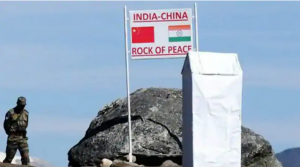 The US on Wednesday supported India amidst the rising border tension with China with a senior diplomat describing Beijing’s aggression as “not always rhetorical” and accusing it of continuing with its “provocative and disturbing behaviour”.
The US on Wednesday supported India amidst the rising border tension with China with a senior diplomat describing Beijing’s aggression as “not always rhetorical” and accusing it of continuing with its “provocative and disturbing behaviour”.
Military sources in New Delhi said that Indian and Chinese armies have rushed in additional troops in areas around Pangong Tso lake and Galwan Valley in Ladakh, signalling to harden of their aggressive posturing two weeks after they were engaged in a fierce face-off.
The sources said the Chinese troops significantly increased their presence in areas around Pangong Tso and even brought in additional boats to the lake. The two sides also have brought in more troops to locations like Demchok and Daulat Beg Oldie.
“The flare-ups on the border, I think are a reminder that Chinese aggression is not always just rhetorical. And so whether it’s on the South China Sea or whether it’s along the border with India we continue to see provocations and disturbing behaviour by China that raises questions about how China seeks to use its growing power,” Alice G Wells, the outgoing head of the South and Central Asia bureau in the US State Department, told reporters in a conference call.
She was responding to a question on the recent flare-up on the India-China border.
Wells retires from the State Department later this month after having headed the important South and Central Asia Bureau of the State Department for three years in the Trump administration.
China claims sovereignty over all of the South China Sea. Vietnam, Malaysia, the Philippines, Brunei and Taiwan have counterclaims.
China is engaged in hotly contested territorial disputes in both the South China Sea and the East China Sea. Beijing has built up and militarised many of the islands and reefs it controls in the region. Both areas are stated to be rich in minerals, oil and other natural resources and are also vital to global trade.
“What we want to see is an international system that provides benefit to everyone and not a system in which there is a suzerainty to China. I think in this instance, the border disputes are a reminder of the threat posed by China,” the top American diplomat said.
On May 5, around 250 Indian and Chinese army personnel clashed with iron rods, sticks, and even resorted to stone-pelting in the Pangong Tso lake area in which soldiers on both sides sustained injuries.
In a separate incident, nearly 150 Indian and Chinese military personnel were engaged in a face-off near Naku La Pass in the Sikkim sector on May 9. At least 10 soldiers from both sides sustained injuries in the incident, according to sources.
The troops of India and China were engaged in a 73-day stand-off in Doklam tri-junction in 2017 which even triggered fears of a war between the two nuclear-armed neighbours.
The India-China border dispute covers the 3,488-km-long Line of Actual Control, the de-facto border between the two countries.
China claims Arunachal Pradesh as part of southern Tibet while India contests it.
Both sides have been asserting that pending the final resolution of the boundary issue, it is necessary to maintain peace and tranquillity in the border areas.
Bureau Report
Leave a Reply